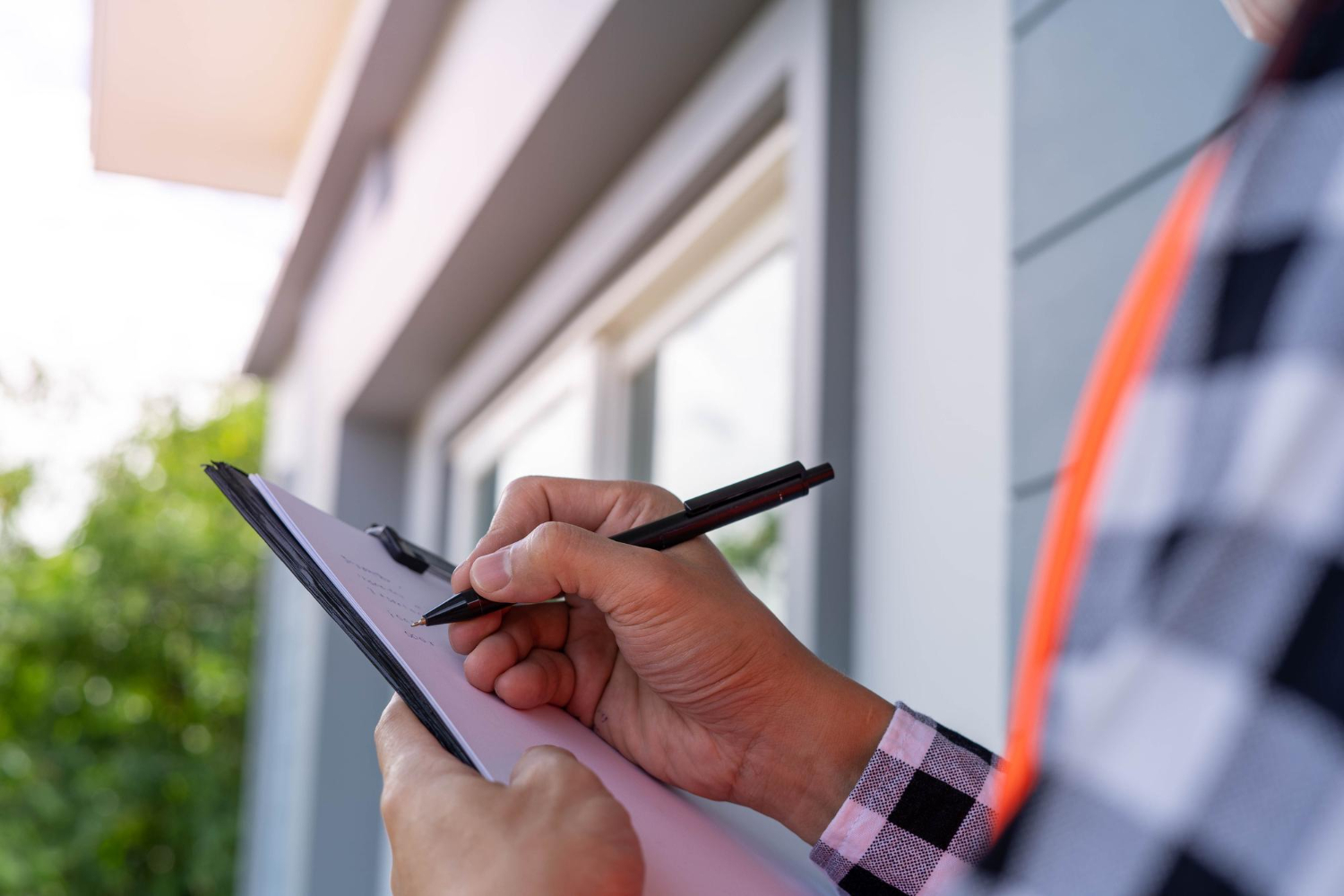Pre-Purchase Inspections: What You Should Know
A pre-purchase inspection has always been a key step when buying a home. It is increasingly common for buyers to forego an inspection to better position their offer in a highly competitive market. However, this practice entails significant risks for the buyer. Here’s why a pre-purchase inspection is essential and what you need to know.
Why should you do a home or condo inspection?
During a building inspection, a specialist will assess the condition of a property and potential problems that could reduce its usability or value.
| “ | The inspection is a thorough visual assessment of the state of the property, a complete examination intended to identify problems or defects that might be missed by someone who doesn’t know what to look for. |
| Danny McNicoll, Vice-President and General Manager of the Association des inspecteurs en bâtiment du Québec (AIBQ) |
The inspection helps determine additional costs to budget for after the sale. Based on this information, you may choose to adjust your proposed purchase price or withdraw your offer completely.
|
Tips and tricks Even if you are buying a new home, it is important to have the property inspected. People often assume that recently built houses or condos have no defects, but unfortunately, that is not the case. Most contractors offer a warranty for construction defects, but for it to be applicable, most homebuilders’ associations require an inspection. For condominiums, it is recommended that both the private portion as well as the entire building be inspected. |
Is home inspection mandatory?
It is not mandatory to have a property inspected prior to buying, but it is highly recommended. If you do not have an inspection done and you notice problems a few months after purchasing the house that could have been identified by a professional, you will have no legal recourse.
Moreover, if you are working with a real estate broker, they are required to recommend that you have the property inspected by a recognized professional in accordance with the Real Estate Brokerage Act.
When should you have a home inspected?
There are several steps in the process of buying a house, such as searching for and visiting properties, and getting pre-approved for a mortgage. A home inspection is done after the conditional offer to purchase has been submitted and accepted by the sellers. If the purchase is conditional on a home inspection, the clause in the promise to purchase requiring the inspection will also indicate a time frame (typically 7 to 10 days) set by the buyer.
|
Tips and tricks Make sure your promise to purchase is conditional on a building inspection. Your broker can help you determine a reasonable time frame that works for you. Please note that from February to May, the 7 to 10-day lead time is too short to find an experienced inspector. 10 to 14 days are required during this period. |
How do you find a building inspector you can trust?
A professional building inspector should be a member of a recognized association, such as the Association des inspecteurs en bâtiment du Québec (AIBQ), the largest entity of its kind in Quebec.
To protect the public, the AIBQ ensures that building inspectors:
- hold an Attestation of College Studies (ACS) in Building Inspection
- have errors and omissions insurance as well as liability insurance
- use a service agreement and a recognized standard of practice
- provide a written report that meets the standard of practice
- complete at least 10 hours of ongoing training annually
You can refer to the AIBQ inspector directory to find an inspector.
|
Tips and tricks It’s a good idea to look for an inspector who is familiar with the area where the property is located, as types of constructions, soils and the environment vary from site to site. They will be on the lookout for problems that are common in a particular area, for example. |
What does a home inspection involve?
Unless there is a major issue, clients are invited to accompany the inspector on the day of the inspection.
This will allow the inspector to explain the different elements they are inspecting as they go, and clients will be able to ask any questions they might have.
The size and condition of the building and how easy different areas are to access will affect the length of the inspection. An inspection for a single-family detached home in good condition should last roughly two and a half hours.
What gets inspected during the pre-purchase inspection?
A pre-purchase inspection is a detailed examination of all aspects of the building. If there are problems, the building inspector will explain how dire each problem is and how urgently it needs to be corrected. The inspection report will distinguish serious issues from minor ones and provide recommendations on the safety of installations. If necessary, the inspector may recommend further investigation by an expert in the related field.
Building exterior
The inspector will start outside the building. They will inspect the roof, siding, doors and windows, balconies, stairs, foundation, sidewalks and driveway, and they will look for safety issues or other problems.
If there is a garage attached to the residence, the inspector will check that the garage door, floor drain, walls, ceilings, dividing door with the living area, and heating system are in good condition and that there are no safety issues.
Building interior
Once inside, the inspector will head to the basement, then on the other floors. They will carefully examine the visible components, including the structure, doors and windows, walls, ceilings, floors, staircases, foundation, plumbing, electricity, ventilation, heating, counters and cabinets, and they will check for potential safety issues.
Finally, the inspector will examine the crawl space under the roof to check the structure, vapour barrier, insulation and ventilation and ensure there are no safety issues.
While going through their long list of items, the inspector will also check for signs of issues related to water infiltration, moisture, insects and vermin.
|
Tips and tricks The inspector may not be able to verify certain parts of the property because of snow, a locked room, lack of access to the attic, etc. |
Understanding the inspection report
An inspection report includes a description and photos of all the parts that were inspected and an assessment of their condition. It also contains recommendations regarding work to be undertaken if necessary. The inspector will provide you with this report, normally within 48 hours of the visit.
Information recorded in the inspection report
An inspection report that meets AIBQ standards must include the following information:
- The name of the applicant
- The context for the inspection (pre-purchase, pre-sale, building condition report)
- The weather conditions during the inspection
- The date and time of the inspection
- The names of the people present
- A brief description of the building inspected
- Photos to support the inspector’s findings
- The name of the inspector
- Their place of business (complete physical address of the company)
- Name of the legal entity or natural person (the legal name of the business)
- The inspector’s signature
- A statement indicating that the inspector has no conflict of interest
- A statement that the Declarations by the seller form has been completed and consulted (if it has not been, the reason should be provided)
The items covered in the inspection report
The inspection report will include a detailed assessment of the components, supported by photos when necessary:
- Structure
- Exterior
- Roof
- Plumbing
- Electricity
- Heating
- Air conditioning
- Interior
- Insulation
- Ventilation
- Personal safety
What should you do with the inspection report?
If the pre-purchase inspection reveals that critical or urgent work is required, you have several options:
- You can negotiate a lower sales price based on the cost of the work to be done. Your real estate broker can advise you on the best negotiation strategy.
- You request that certain work be done by the seller before taking possession.
- You can withdraw your promise to purchase if it was conditional on the inspection and the work required is considered serious and therefore hinders or greatly diminishes the property’s usability.
|
Tips and tricks If this is your first inspection report, you may feel slightly overwhelmed, as the report includes all the elements that were inspected and is often very detailed. It is also important to consider that most houses have multiple minor defects to correct that are part of normal wear and tear. The inspection report can serve as a guide to help with planning work and maintenance. |
Understanding what the building inspector can and can’t do
The inspector represents the interests of the buyer who hired them. However, there are some things they cannot comment on:
- Cost of repairs and renovations: The best way to get an accurate estimate of the cost of the work is to contact a contractor. They will be able to evaluate your specific needs and the materials needed, as well as the manpower required to carry out the work.
- Lifespan of inspected items: Determining the lifespan of an item that has been inspected can be complex, especially if it was installed incorrectly. Inspectors generally focus on detecting visible signs of deterioration, but they don’t provide an accurate estimate of the lifespan as it depends on a variety of factors, such as the initial installation and exposure to environmental factors.
- Presence of hazards such as iron ochre, asbestos, etc.: The inspector may visually identify signs of iron ochre or other potentially hazardous materials such as asbestos, but they will not perform a laboratory test. They will instead recommend analysis by a specialized professional.
- Market value of the property: It is the real estate broker’s job to present comparables and provide their expertise to assess the property’s market value. The buyer may also use an accredited appraiser.
A pre-purchase inspection is a worthwhile investment
A pre-purchase inspection is key to making an
informed decision when purchasing a property. However, it is still very
important to carefully search for properties that match your needs and budget.
A thorough inspection and careful research will increase your chances of finding the perfect home and give you peace of mind.
Home inspection FAQs
1. Does the Declarations by the seller form replace the home inspection?
The Declarations by the seller form is not a substitute for a proper home inspection. This form assesses the condition of the house, limited to the seller's knowledge, and protects both parties. When the seller is working with a broker, the Declarations by the seller is a form required by the OACIQ as part of the brokerage contract. The seller must fill it out and sign it in order to be represented by a broker. The AIBQ inspector will also require a declaration from the seller, regardless of whether the property is sold through a broker or by the owner himself.
2. Who pays for the pre-purchase inspection and how much does it cost?
The buyer normally pays
for the inspection. In some cases, the seller may also decide to have a
pre-sale inspection done to help them determine the scope of work to be done.
In this case, they can provide the report to potential buyers. However, it is
advisable that the buyer also hire an inspector to ensure impartiality. A home inspection costs between $750
and $850 for a
single-family home, according to the AIBQ. The price may vary depending on
various factors, such as the type of building, as well as its size, age and
location.
3. What does it mean to buy a house without a legal warranty?
Buying a house without a legal warranty means you are waiving certain recourse rights related to hidden issues (hidden defects). It means you cannot hold the sellers liable for defects that were not visible during the pre-purchase inspection and cost of repairs or replacement is your responsibility.
Article written in collaboration with:


See also:
How much does a home inspection cost?
Everything you need to know about selling without a legal warranty
The Top 5 Most Common Hidden Defects
 The Largest Number of Homes for Sale
The Largest Number of Homes for Sale




